Lead generation is one of the most important skills you can develop if you want to grow an online business consistently.
It’s not just about collecting emails, it’s about attracting the right people, building trust, and guiding them through a journey that ends in a sale (and ideally, a long-term customer).
If it feels harder than ever to stand out and capture attention, you’re not alone. But the truth is, with the right systems in place, generating qualified leads doesn’t have to be complicated or expensive.
This guide breaks down proven strategies for building lead magnets, optimizing your website, running social ads, and scaling your efforts using both free and paid tools. Whether you’re starting from scratch or tightening up your current funnel, you’ll find something here you can use today.
Key Takeaways
Lead Generation Essentials for Sustainable Growth
- Lead generation fuels long-term business growth. It helps you consistently attract, capture, and nurture potential customers into buyers.
- Lead magnets work best when they solve one clear problem. Think simple, fast-win resources like checklists, templates, or short trainings.
- Your website should guide visitors toward one clear action. Use strong CTAs, fast load times, and focused landing pages to boost conversions.
- Social media and webinars help you connect and build trust fast. Leverage these channels to deliver value and grow your list in real time.
- Content and SEO bring in leads passively over time. Long-tail keywords + gated assets = steady, high-quality traffic that converts.
- Paid ads help scale what already works. Combine ads with a strong offer and follow-up to grow faster without guesswork.
Disclaimer: I am an independent Affiliate. The opinions expressed here are my own and are not official statements. If you follow a link and make a purchase, I may earn a commission.
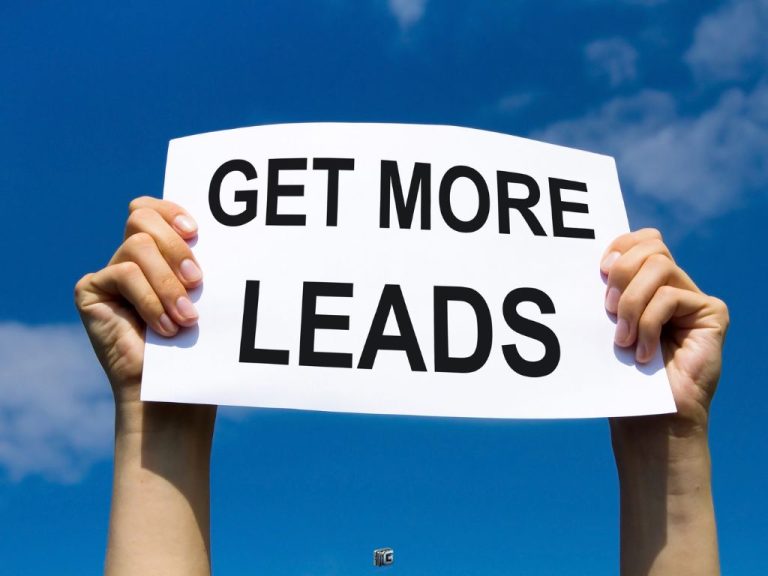
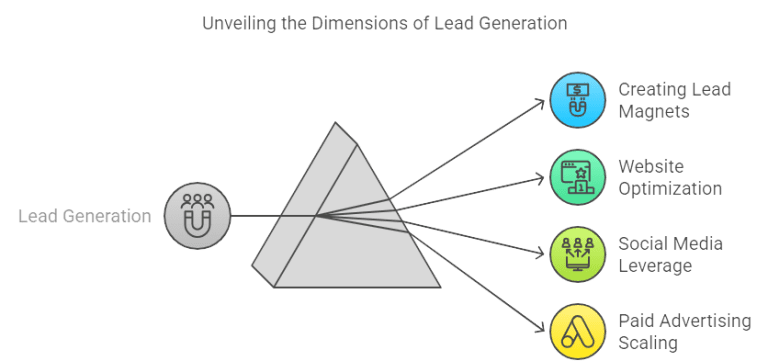
What is Lead Generation, and Why Does it Matter?
Lead generation is the process of attracting potential customers and turning them into interested prospects.
It is the first step in building trust and creating a reliable sales funnel for your business.
Why Lead Generation is Critical
You’ve probably heard “the money’s in the list” but it’s deeper than that. A good lead generation system doesn’t just grow your list. It gives you control, confidence, and clarity in your marketing. Let’s break down exactly why it matters:
1. Sustainable, Predictable Growth
Relying on random traffic or social media bursts isn’t a strategy, it’s a gamble. Lead generation gives you a repeatable process for bringing in potential customers on autopilot.
Every time someone downloads your lead magnet, registers for a webinar, or opts into your email list, you’re creating a predictable path toward conversion. This takes the pressure off constantly chasing new sales and allows you to build momentum that compounds over time.
Why it matters:
- You wake up to new leads daily not start from scratch every week
- You can forecast results and plan promotions with more confidence
Your audience grows even when you’re not actively promoting
2. Revenue Becomes Scalable
More leads doesn’t just mean more traffic, it means more targeted opportunities to make sales. But it’s not just about quantity, it’s about quality.
When your lead generation is working well, you’re attracting people who are already experiencing a pain point or actively looking for solutions. They’re warmer, more engaged, and more likely to convert.
Why it matters:
- You spend less time (and money) convincing the wrong people
- Conversion rates go up because the right leads are already problem-aware
You can scale your offers with more predictability and less risk
3. Deeper Market Insights
Leads aren’t just emails in a CRM, they’re signals. Every click, download, and opt-in tells you something about what your audience wants.
By analyzing what lead magnets get downloaded most, which landing pages perform best, or which ads convert, you gain real insight into your market’s mindset. This lets you improve everything from your messaging to your offers.
Why it matters:
- You stop guessing what content or product to create
- You know which pain points are worth building around
- You create offers that match real demand, not assumptions
4. Protection Against Market Fluctuations
Let’s be real algorithms change, ad costs spike, and platforms evolve. But if you have a growing list of leads, you have a direct line to your audience that no one can take away.
An email list gives you leverage. Even if a platform bans your account or your SEO rankings drop, you can still reach your people and drive revenue.
Why it matters:
- You’re not dependent on any one channel for traffic or sales
- You can pivot quickly with new offers and still reach buyers
- Your business becomes more resilient, stable, and future-proof
Ever wish your content could grow your list for you?
- You’ve got the ideas — great ones. This AI tool turns them into lead magnets your audience actually wants to download.
- No design tools. No blank pages. Just real results, faster.
- If you’ve got content… this tool will make it work harder for you.
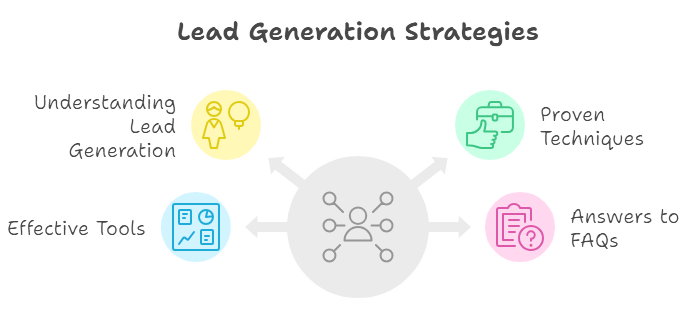
Create Irresistible Lead Magnets to Boost Your Lead Generation
A lead magnet is more than just a freebie. It’s a value-packed offer that earns attention, builds trust, and moves your audience one step closer to becoming a customer.
And the best part? It works while you sleep.
But for a lead magnet to work, it needs to do one thing: solve a real problem your ideal audience is already trying to fix. The more specific and outcome-driven, the better.
Here’s how to craft lead magnets that actually convert:
What Makes a Lead Magnet Effective?
- It solves one clear problem. Don’t try to be everything. Help your audience fix one thing fast.
- It promises a quick win. Think checklists, templates, or short trainings stuff they can use immediately.
- It aligns with your paid offer. If your lead magnet attracts people who won’t want your product later, it’s wasted effort.
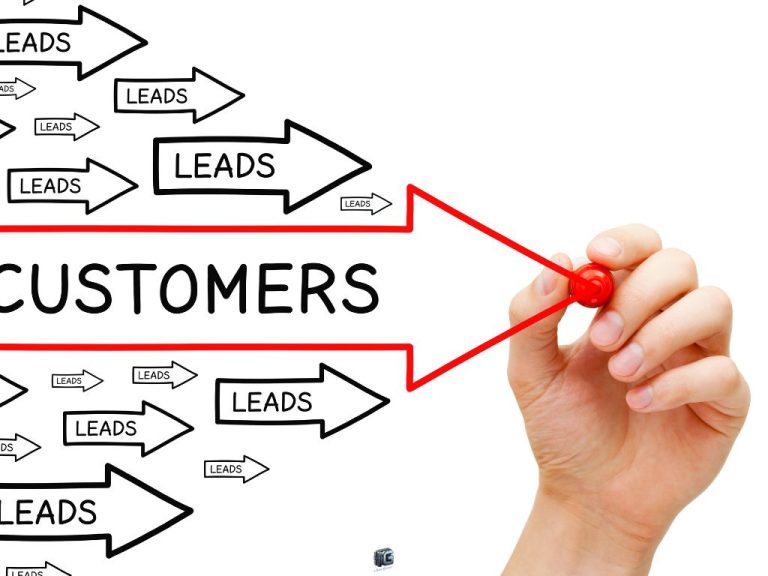
Types of High-Value Lead Magnets (and How to Use Them)
Let’s break down some of the best-performing types of lead magnets, and how to use them strategically:
1. eBooks & Action Guides
Example: “The Beginner’s Guide to Email Marketing That Converts”
Great for: Educators, coaches, service providers, affiliate marketers
Why it works: It positions you as an expert and helps solve a specific problem while naturally leading into your product or service.
Pro tip: Break longer eBooks into a short, skimmable guide with checklists and action steps. People want speed, not theory.
2. Templates & Swipe Files
Example: “5 Plug-and-Play Landing Page Templates That Convert”
Great for: Designers, copywriters, affiliate marketers, funnel builders
Why it works: Templates save people time and everyone wants shortcuts. These are perfect for DIY audiences who want to take action quickly.
Pro tip: Create a lead magnet bundle (e.g., templates + checklist + short tutorial) to increase perceived value.
3. Free Mini-Courses or Trainings
Example: “How to Launch Your First Facebook Ad in 30 Minutes”
Great for: Coaches, consultants, digital product sellers
Why it works: You teach, build trust, and create a sense of value before asking for anything. These work especially well for higher-ticket offers.
Pro tip: Deliver via automated email drip to keep users engaged for multiple days and naturally lead them to the next step (product, call, etc.).
4. Checklists & Cheat Sheets
Example: “The Ultimate Blog Post SEO Checklist”
Great for: Bloggers, niche site builders, content marketers
Why it works: They’re fast, actionable, and easy to consume. Perfect for lead capture at the top of blog posts or inside resource libraries.
Pro tip: Brand it like a premium asset, even if it’s one page. Design and clarity = perceived value.
5. Free Tools or Resource Lists
Example: “Top 10 Free Tools Every Affiliate Marketer Needs in 2025”
Great for: Affiliates, tech educators, content creators
Why it works: You provide value and have a natural excuse to embed affiliate links or recommend paid upgrades in the tool list.
Pro tip: Use this as a “feeder” magnet that leads to your core offer or email nurture sequence.
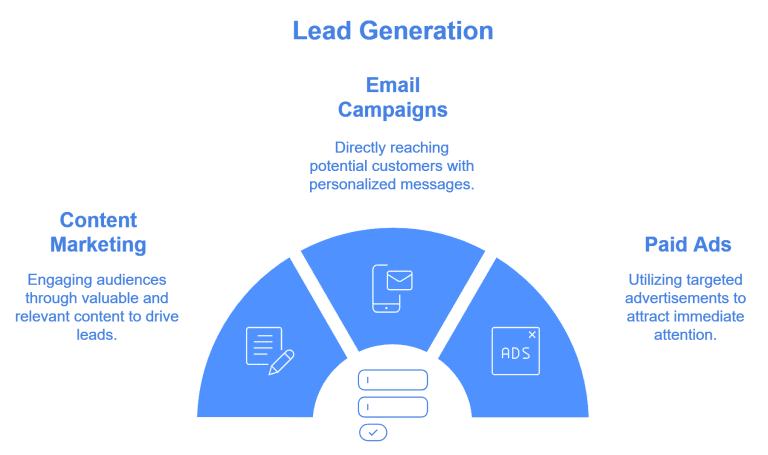
Optimize Your Website for Lead Generation
Your website isn’t just a place to showcase what you do, it’s your #1 asset for turning casual visitors into leads.
But here’s the catch: most websites aren’t built to convert. They look good, maybe even get traffic, but don’t capture attention or guide people toward action.
If you want your site to generate leads consistently, you need to design it like a funnel where every section moves visitors closer to opting in.
Here’s how to do it:
1. Use Clear, Strategic Calls-to-Action (CTAs)
Your CTAs should stand out visually and make it obvious what someone gets when they click. A button that says “Learn More” is vague. A button that says “Download Your Free SEO Checklist” is clear and value-driven.
Where to place them:
- Top of homepage (“above the fold”)
- End of blog posts
- Within your about/services pages
- In pop-ups, banners, and sidebars
Pro tip: Use verbs that spark action like get, grab, download, or unlock paired with a result.
2. Add Exit-Intent Pop-Ups to Capture Last-Minute Visitors
These pop-ups appear when a user’s mouse moves to close the tab or leave the site perfect timing for a second chance at capturing their email.
What to offer:
- A free checklist
- A discount code
- A content upgrade (e.g., PDF version of the blog they’re reading)
Tools to try: OptinMonster, Sumo, Thrive Leads
Pro tip: Keep the copy short and use urgency “Before You Go: Grab This Free Toolkit!”
3. Create Dedicated Landing Pages for Each Offer
Instead of sending all your traffic to your homepage, build focused landing pages for each lead magnet, service, or campaign.
Why it works:
- No distractions = higher conversion
- Easier to test and optimize
- You can align messaging with the traffic source (e.g., Facebook ad → free course opt-in page)
Pro tip: Use tools like Leadpages, Systeme.io, or GetResponse to build landing pages without code.
4. Improve Page Load Speed to Boost Conversions
Visitors won’t stick around if your site takes forever to load. A slow site = higher bounce rate, lower conversions.
Quick fixes:
- Compress large images (use tools like TinyPNG)
- Use a fast, lightweight theme
- Install caching plugins (like WP Rocket or LiteSpeed)
Pro tip: Run a free audit with Google PageSpeed Insights or GTmetrix to see what’s slowing your site down.
When every page on your site is designed with lead generation in mind, your traffic starts working for you not against you.
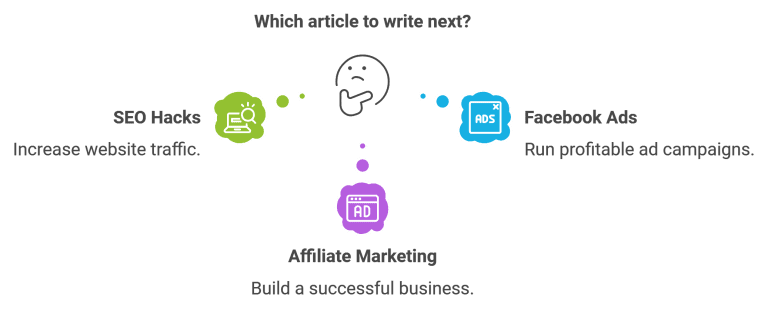
Leverage Social Media Platforms for Lead Generation
Social media isn’t just for brand awareness anymore, it’s a powerful tool for capturing leads when used with intention.
But to generate real results, you have to go beyond posting quotes and hoping for likes. The goal is to turn attention into action getting people off the scroll and into your funnel.
Here’s how to use the major platforms to drive qualified leads:
1. Facebook Lead Ads: Make It Frictionless
Facebook Lead Ads are built for speed. Instead of sending users to a separate page, Facebook auto-fills their contact info inside the app making it super easy to opt in.
Best for:
- Offering a quick lead magnet
- Running webinars
- Building newsletter signups
Pro tip: Keep the form short (name + email) and highlight the benefit clearly in the headline. Example: “Get the Free Toolkit That Helped Me Double My Email List.”
2. Instagram Stories with Links: Fast, Visual, Clickable
Instagram Stories are high-attention, low-commitment and they can drive serious traffic when used right.
If you have link access (or use a Link in Bio tool), promote your lead magnet or offer directly in a Story with a strong CTA.
What works well:
- “Swipe up to download”
- Before-and-after results with a link to your checklist/template
- Quick tips with “Want more? Grab the full guide”
Pro tip: Use polls or question stickers to engage your audience before dropping the link, it warms them up.
3. LinkedIn Sponsored Content: B2B Lead Machine
If you’re targeting professionals, business owners, or high-ticket clients, LinkedIn is gold.
Sponsored posts (or even organic thought-leadership content) can drive traffic to lead magnets, webinars, or case studies that position your brand as the solution.
Smart strategies:
- Use a compelling hook with a soft ask: “We created a free PDF that breaks this process down, happy to share it.”
- Publish a short story or breakdown, then drop your lead magnet in the comments
Pro tip: Build connections first LinkedIn responds best to relationship-first content. Don’t pitch cold.
Bonus Tip: Use Organic + Paid Together
Not every post needs to sell. Use organic content to build trust and start conversations. Then run paid ads on your top-performing content to turn engagement into conversions.
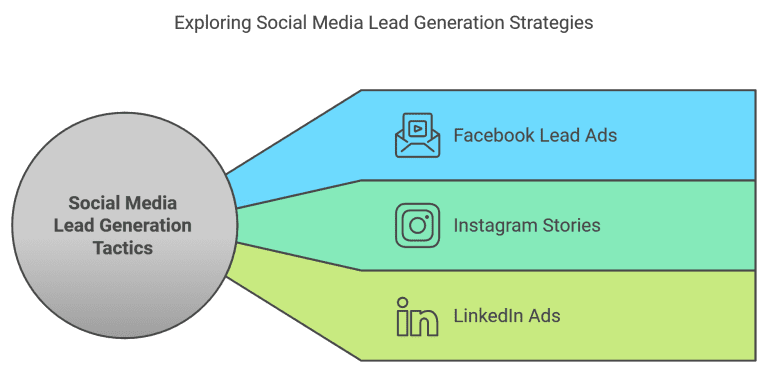
Lead generation: Use Webinars to Capture Leads
Webinars are one of the most effective lead generation tools available especially when you’re selling high-ticket offers, digital products, or services.
They give you a rare opportunity to speak directly to your audience, demonstrate expertise, and build trust in real time. And if done right, they don’t just capture emails, they pre-sell your offer before you ever pitch it.
Here’s how to make webinars work for lead generation (even if you’ve never hosted one before):
1. Choose a Specific, Problem-Solving Topic
The title of your webinar should focus on solving one major pain point or helping your audience achieve a clear, valuable outcome.
Examples that work:
- “How to Build a Lead Generation Funnel in One Weekend”
- “3 Simple Strategies to Grow Your Email List to 1,000 Subscribers”
- “The Framework I Used to Land 10 Clients Without Cold Pitching”
Pro tip: Use the “How to [Result] Without [Obstacle]” formula for maximum interest.
2. Require Registration to Collect Leads
Before anyone can join the webinar, they enter their name and email, this is your lead capture moment.
Use a landing page with:
- A strong, benefit-driven headline
- Quick bullet points on what they’ll learn
- A countdown timer or clear time/date info
Tools to use:
Zoom, WebinarJam, Demio, Systeme.io, or even YouTube Live with gated access via email.
3. Deliver Real Value (Not Just a Sales Pitch)
The first goal of a webinar is to build trust. Teach something useful. Share a framework, bust a myth, or walk through a case study that’s genuinely helpful.
Then and only then introduce your offer or next step (which ideally solves the next problem your audience will face).
Pro tip: Position your offer as the natural continuation of what they just learned, not a hard sell.
4. Use Email Follow-Ups to Maximize Conversions
Don’t stop after the webinar. Send follow-up emails that include:
- The replay link
- Extra resources (slides, workbook, freebie)
- Recap of key takeaways
- A limited-time offer (optional)
Why this matters: Many people register but don’t show up live. Your follow-up sequence is where a large portion of your conversions will happen.
Webinars take effort but they build deep connection, authority, and conversion power few other formats can match.

Combine Content Marketing and SEO
Content marketing paired with SEO is one of the most reliable (and cost-effective) ways to generate leads long-term. But here’s the catch random blog posts won’t cut it.
To generate real results, your content needs to attract the right traffic and offer the right opportunity to opt in.
Here’s how to make your content actually convert:
1. Focus on Long-Tail, Intent-Driven Keywords
Don’t try to compete for generic keywords like “lead generation.” Instead, go after specific, buyer-intent phrases your audience is already searching for.
Examples:
- “how to generate B2B leads on LinkedIn”
- “best lead magnets for service businesses”
- “email funnel for lead nurturing”
Pro tip: Use tools like Ubersuggest, Answer the Public, or Ahrefs to find questions your ideal customer is typing into Google right now.
2. Create Gated Content That Solves a Problem
Not every blog post needs to be open access. Offer bonus resources your reader can download in exchange for their email turning traffic into warm leads.
Examples of gated content:
- PDF versions of blog posts
- Checklists or templates that pair with the article
- Advanced video walkthroughs or case studies
Pro tip: Use inline opt-in forms inside the blog post not just pop-ups or sidebars. Catch the reader while they’re most engaged.
3. Publish Consistently with a Strategic Funnel in Mind
Don’t just write for clicks. Write content that aligns with your products, offers, or lead magnets.
Each post should serve a clear purpose:
- Attract SEO traffic
- Educate or pre-sell
- Link to your opt-in or offer
Example: If your lead magnet is “Free Webinar: How to Build a Funnel,” write blog posts like:
- “Top 3 Mistakes People Make When Building Their First Funnel”
- “Best Tools to Launch a Funnel in a Weekend”
Pro tip: Link internally between related blog posts and your opt-in pages to build SEO authority and guide the reader through a journey.
When you combine great content with smart keyword targeting and strong CTAs, your blog becomes more than just content, it becomes a lead generation engine that works 24/7.
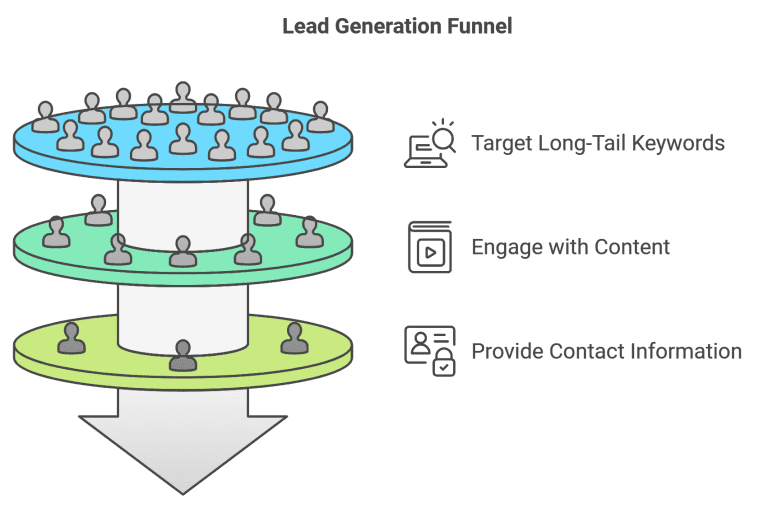
Lead generation: Scale Efforts with Paid Ads
Content and organic strategies are powerful but they take time. If you want faster results and consistent lead flow, paid advertising is the key to scaling.
Done right, ads don’t just get you clicks, they get you the right people onto your list, into your funnel, and closer to becoming customers.
Here’s how to use paid traffic to grow your lead generation system effectively:
1. Start with a Targeted Offer and a Simple Funnel
The worst thing you can do is send cold traffic to a generic homepage. Instead, pair a specific ad with a focused lead magnet landing page.
Example funnel flow: Facebook Ad → Free Guide Opt-In Page → Thank You Page → Email Welcome Sequence
Best lead magnets for ads:
- Short, actionable checklists
- Video trainings
- Free templates or toolkits
Pro tip: Make sure your ad headline, image, and landing page copy all feel cohesive. Consistency = conversions.
2. Use Audience Segmentation for Better Targeting
Generic ads = generic results. Platforms like Facebook, Instagram, and YouTube allow for ultra-specific audience targeting, use it.
Target by:
- Behavior (visited your site, watched a video)
- Interests (based on what they follow or engage with)
- Demographics (job title, location, device, etc.)
Pro tip: Start with warm audiences (like website visitors or email subscribers) before spending big on cold traffic.
3. Test Multiple Creatives and Copy Variations
The ad that performs best isn’t always the one you like, it’s the one your audience responds to. That’s why A/B testing is critical.
Test things like:
- Headlines vs. questions
- Image vs. video
- “Download now” vs. “Get instant access”
Pro tip: Don’t just test the ad, test your landing page too. A small tweak (like the headline or CTA button color) can lift conversions significantly.
4. Use Retargeting to Re-Engage Interested Visitors
Most people don’t opt in on the first visit. Retargeting ads let you bring them back at just the right moment.
Smart retargeting ideas:
- “Forget something?” ad for people who visited your lead magnet page but didn’t opt in
- Testimonial ads showing proof from others who benefited from your free offer
- “Quick reminder” ads leading to a time-limited download or free training
Pro tip: Keep retargeting audiences separate from cold audiences so you can tailor the message precisely.
When you combine a strong offer, smart targeting, and continuous testing, paid ads can become the rocket fuel for your lead generation engine.

Conclusion
Lead generation isn’t just a tactic, it’s the foundation of long-term growth in any online business.
Whether you’re attracting leads through content, capturing them via social media, or scaling with paid ads, the key is creating value first. The more you focus on solving real problems and guiding your audience with purpose, the more consistent (and qualified) your leads will be.
Start small: choose one strategy from this guide, implement it fully, and build momentum from there. Over time, your system will grow and your leads will too.
Next Step: Want help building your first lead magnet or setting up a lead funnel? To learn more check out our top strategies here.
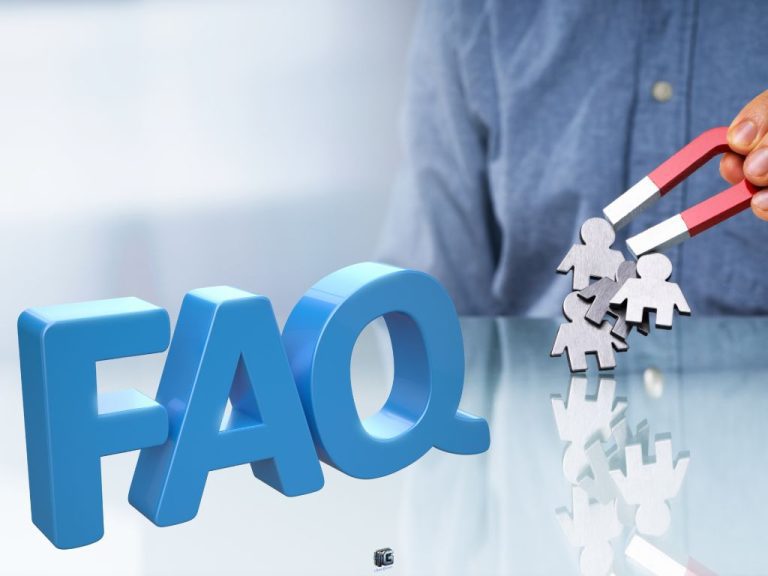
Frequently Asked Questions (FAQs)
1. What exactly is lead generation?
Lead generation is the process of attracting potential customers and collecting their contact details usually through forms, opt-ins, or lead magnets so you can follow up and guide them toward a product, service, or offer.
2. What are the best lead generation strategies for beginners?
Start with a simple, value-driven lead magnet like a checklist or free guide and promote it via a dedicated landing page. Drive traffic using blog content, social media posts, or low-cost paid ads.
3. How do I know if my lead magnet is working?
Track metrics like opt-in rate (visits vs. sign-ups), engagement (email opens/clicks), and conversion (sales or actions taken). Tools like ConvertKit, Systeme.io, or MailerLite can help you monitor this in real time.
4. Do I need a website to start generating leads?
No, but it helps. You can begin with landing page tools like Leadpages or Systeme.io. That said, having a website gives you more control and trust with your audience over time.
5. What platforms are best for paid lead generation?
Facebook Ads, Instagram, and YouTube are top picks for B2C and info-product marketing. LinkedIn works well for B2B. Google Ads is great if you’re targeting intent-driven keywords or search-based leads.
6. How can I generate leads organically without spending money?
Focus on creating SEO-optimized blog content, publishing regularly on social media, and offering free value (like downloadable templates or checklists) in exchange for email opt-ins.
7. Can AI tools help with lead generation?
Absolutely. You can use AI to write email sequences, create landing page copy, build lead magnet content, or even design ads. Tools like Jasper, Copy.ai, and ChatGPT are excellent for speeding up your workflow.

6 Comments
Top Strategies for Lead Generation: From Real Estate Leads to TikTok Lead Generation in 2024 - Ismel Guerrero. · November 19, 2024 at 10:22 pm
[…] […]
Lead Generation Strategies: Top Methods to Attract and Convert Leads - Ismel Guerrero. · January 23, 2025 at 2:22 pm
[…] more in-depth insights on mastering lead generation, visit our Ultimate Guide to Lead Generation and discover actionable strategies tailored to your […]
Lead Generation Funnel: How to Build and Optimize for Maximum Conversions - Ismel Guerrero. · January 25, 2025 at 12:18 am
[…] Mastering the Art of Lead Generation […]
Best Lead Generation Tools for 2025 (Free & Paid) - Ismel Guerrero. · February 10, 2025 at 9:29 pm
[…] more insights on optimizing your lead generation efforts, check out our Ultimate Guide to Lead Generation and explore more strategies to drive business […]
Lead Generation Funnels: Best Strategies for Sales & Marketing - Ismel Guerrero. · February 13, 2025 at 10:30 pm
[…] To understand lead generation in a broader context, check out our Ultimate Guide to Growing Your Business. […]
AI Lead Generation: Smarter Leads, Less Work - Ismel Guerrero. · April 16, 2025 at 11:43 pm
[…] to compare this to more traditional methods? Check out this guide on lead generation that still work in today’s […]